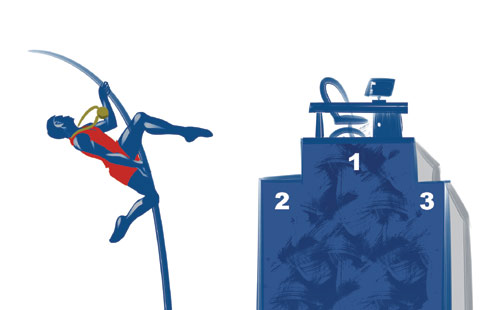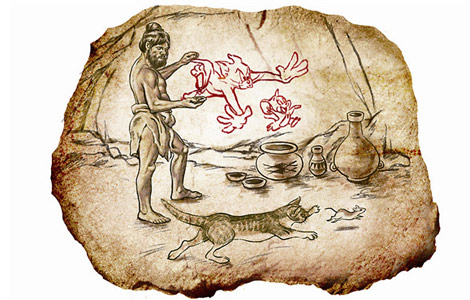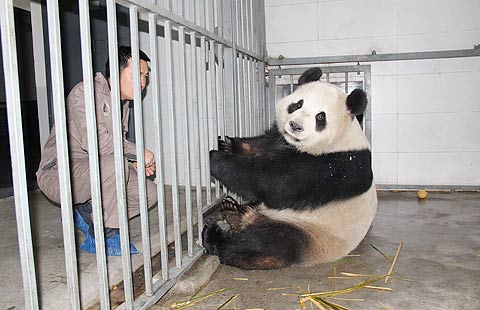Getting right fit is harder than it looks
Updated: 2014-02-21 08:31
By Ricky Sun (China Daily Europe)
|
|||||||||||

International fashion brands need to cut their cloth to suit the Chinese market
As world-renowned consumer goods companies enter China, a series of problems has sprung up in the Chinese market for international fashion brands.
Fashion brands such as Zara, C&A, Uniqlo and H&M bear striking similarities. Although they come from different cultural backgrounds, the brands will inevitably confront difficulties that international fashion brands face in China.
Mango, a Spanish brand, entered China at an early stage but was forced to shut shops after posting dismal sales figures, and gradually faded out of the market.
The first difficulty that the fashion companies face is fierce competition among international brands.
Esprit and Mango are among the brands that have faced serious problems in China. Since 2009, Esprit's profits have spiraled downward. During the first half of 2011, the company's net profit dropped 98 percent, and in one day its share price dropped $41. In response, the company began closing stores on the mainland.
Mango's 2010 financial statements for China indicate that its market share in China accounts for only 2.7 percent of the global market, excluding VAT. Mango owned 115 stores in China last year, a 42.5 percent year-on-year drop compared with 2012. Most Mango stores were forced to offer big discounts to get rid of stock.
When brands like Zara and H&M make their debuts in China, they always try to label themselves as superior and high-end. They use eye-catching marketing in China aimed at making consumers forget about the brands' down-at-home image in their local markets. However, the strategy fails when competing with real high-end brands like Hermes and Chanel.
The second difficulty is increasing competition from domestic fashion brands.

International fashion brands like Zara, H&M and GAP have flooded China in recent years, but domestic fashion brands are used to the competition. They have learned how to optimize their business models, and are now taking advantage of their localization to narrow the gap with international fashion brands.
As the market becomes mature, the design and development capability of domestic fashion brands has almost reached the same level as international ones. Although there is still a gap in grasping fashion trends, many companies have gradually implemented the appropriate strategies and cultivated local Chinese fashion designers.
Me&City, a typical representative of domestic fashion brands, recently worked with top international fashion trend forecasting agencies as well as renowned international fashion designers, keeping a close eye on international fashion weeks. Their Chinese and foreign designers have combined local and international elements of the brand and gone to fashion capitals to do market research.
While some international fashion brands have achieved great success in China, domestic companies realize they should not blindly follow them. It is essential for domestic companies to have a stable presence in the local market and integrate into the industry chain, adopting international standards on technical aspects such as product design, supply chain and a marketing strategy based on what is really happening in China.
The third difficulty is whether product quality can stand long-term scrutiny.
Last year, the results of the Comparison Test of Apparel & Fashion conducted by the China Consumer's Association attracted widespread attention. Several international brands such as Zara, M&S, Guess and Paul Frank were tested, and more than one-third of the sample products did not meet national quality standards.
The authority conducted special tests for product identification, component content, formaldehyde content, pH value, color fastness, smell, tear strength, and several other things. It turned out that fabric is still the Achilles' heel of international fashion brands, which is closely related to global sourcing and production.
Products of international fashion brands sold in one country are often from different regions in the world, which causes inconsistencies in product quality control. In addition, inadequate localization generates substandard products.
For instance, domestic and international markets have different criteria for fabric, which leads to substandard products. However, consumers still flock to international fashion brands because they believe there are no "fatal problems".
However, that does not mean international fashion brands do not have issues. The quality problems that affect international brands are caused by a lack of supervision. Also, a gap between Chinese standards and the global sourcing and production model still exists.
Notwithstanding the popularity of international brands in China, especially in the initial market stage, once there is a "fatal problem" with material, brand image and customer loyalty will suffer. Even cheap and affordable international fashion brands will be regarded as low-quality and low-priced.
The fourth difficulty is a huge industry talent gap.
A survey from RMG Marketing Research Center shows that those in the fashion industry tend to be quite young, most with a good education, especially in the luxury field. However, the fashion industry still suffers from a serious lack of talent.
The fashion industry may seem glamorous to many, but many who work in it think this glamor is highly overstated. Moreover, many professional managers find it difficult to advance when they reach a certain seniority level. There is a disparity in the amount of talent in the domestic and international fashion industries. Recruiters and headhunting firms have become the main recruitment channel in the industry.
The "China Talent Flow-Survey 2013" conducted by RMG Selection reveals that about 70 percent of recruiting phone calls are from recruiters and headhunters in the fast-moving consumer goods and retail industry.
International brands must choose the right development strategy to succeed in China, where both opportunities and challenges exist.
The author is fast-moving consumer goods consultant at RMG Selection, an Asia-focused human resources and recruitment consultancy based in Beijing. The views do not necessarily reflect those of China Daily.
( China Daily European Weekly 02/21/2014 page12)
Today's Top News
Pandas arrive in Belgium
China urges US to correct mistakes on Tibet
9 punished for spreading flu rumor
Beijing upgrades haze alert
Ukrainian parliament dismisses president
China strongly opposes Obama-Dalai meeting
Tax refunds to lure overseas tourists
Prosecutors tackle food crimes
Hot Topics
Lunar probe , China growth forecasts, Emission rules get tougher, China seen through 'colored lens', International board,
Editor's Picks

|

|

|

|

|

|





